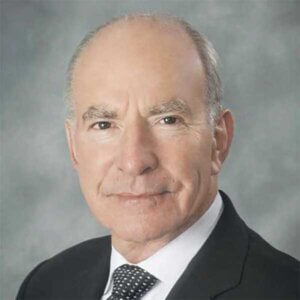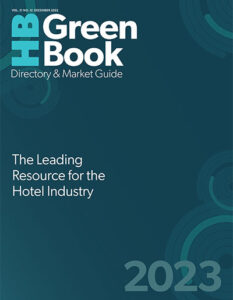Purchasing companies are bullish about 2023. Demand remains high for both projects and travel. However, companies are still navigating some challenges that persist: shortages (for both labor and materials) and long lead times. Hotel Business spoke with Erica Colegrove, project director/team leader, Benjamin West’s Boulder office; Neil Locke, principal, Neil Locke & Associates; and Emille Aboona, cofounder/COO, Q&A Hospitality Services Inc., for their insight.
—Abby Elyssa
What were some high points for you this past year?
Colegrove: In 2022, it has been exciting to see a steady improvement in the level and sizes of projects, giving a sense of security in that the hospitality industry has been able to stay strong throughout the challenges of the pandemic. It has been wonderful to be traveling for in-person project meetings and model rooms again, and I enjoyed being able attend the groundbreaking ceremony for one of my current projects, Dream Hotel, in Las Vegas this past summer.
Locke: There were a lot of PIP projects, as well as some exciting lifestyle work.
Aboona: Increase in business level on all fronts was a welcoming site after surviving 2020 and first half of 2021 due to COVID. We have been very fortunate to be working on all project types related to new construction and PIPs since the second half of 2021. Additionally, Q&A was awarded few new design and procurement approval status with several prominent brands that will pave the way for years to come and provide the utmost service to our clients.
What does the purchasing landscape look like in 2023?
Colegrove: In 2023, we will continue to see a record demand for CapEx, given that demand for leisure travel remains strong and business travel continues to pick up. During COVID, lenders allowed hotel owners to tap into the 4% CapEx reserve on short-term survival needs. Therefore, in 2023 and 2024, we anticipate seeing a lot of change of ownership PIPs driven not by a property in traditional financial distress, but rather a lack of available funds for CapEx.
Locke: It appears that 2023 will be a very busy year for our part of the hospitality business. Most of the designers and purchasing agents that I know are engaged with projects and RFPs.
Consequently, this will eventually stress the manufacturers but overall, that is a good problem for all of us!
Aboona: It looks very promising. There are lots of various project types in the pipeline for 2023 and beyond, but the main challenge remains with staffing shortages which is still front and center. It has been a struggle to find suitable hires as we continue to adjust of doing more with less head count, but we’ve increased our staff recently and will be able to complete all tasks in a timely manner.
What should we expect for projects in the coming year?
Colegrove: We are seeing a lot of projects that require an immediate start by the project team and expect this trend to continue into 2023 as demand remains steady. It is as important as ever to retain and engage the entire project team as early as possible. The earlier we can be engaged to review a project’s budget, discuss vendor selections and analyze lead times, the more successful the project outcome will be.
Locke: There will be more PIPs and complete renovations.
Aboona: We are extremely bullish about 2023 based on our hefty pipeline related to various types of projects and the continuous stream of RFPs for projects beyond next year, which is a great indication of what lies ahead. We are very much looking forward to a successful 2023 campaign.
How did supply chain issues change over the last year? What can we expect for 2023?
Colegrove: Overall, many supply chain issues still persist and continue to affect not only our industry, but other industries such as automobiles and technology. Throughout the pandemic, we have dealt with rolling COVID factory closures, raw material shortages and labor shortages, which have all impacted FF&E lead times from both a manufacturing and shipping standpoint. In 2021, we saw a massive increase in container costs (up to $28K a container); however, in 2022, this has been on the steady decline (currently averaging $3K-4K a container). In 2023, we expect labor issues to persist, as well as warehousing costs continuing to rise due to labor shortages and a deficit of available storage space. Be sure to plan ahead; we recommend that our clients have both a domestic and international source for any one commodity in a model room review in order to mitigate risk for the production scope.
Locke: The shipping issues from Asia have been mitigated significantly in terms of costs and clearance time. However, there is concern about the potential rail strike. We anticipate lead times for custom FF&E will continue to be longer than they were before the pandemic.
Aboona: I think it will be more of the same as extremely long lead times related to production and shipping will be the main challenge. It did improve from 2020-2021, but we are nowhere near normal and will just have to navigate and plan around it. We provide Gantt charts to clients to illustrate that is it not too early to place orders based on the recommended timeline. It is often assumed incorrectly that once the project is awarded and we move forward with placement of POs, production does not begin until funding is secured. Overall, we are bullish about the positive outlook for 2023 and beyond.




